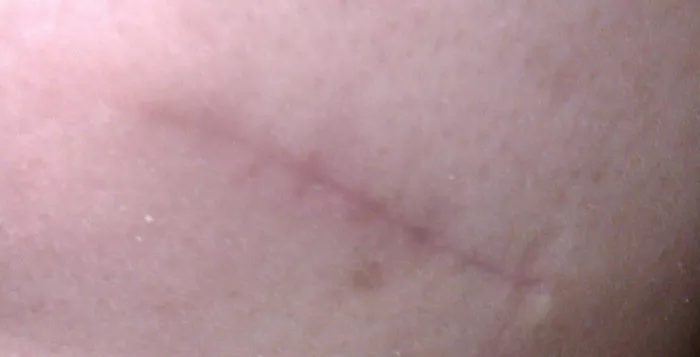Tattoos are a popular form of self-expression, art, and cultural significance. Whether it’s a bold design, a meaningful symbol, or simply a way to showcase one’s personality, getting a tattoo can be an exciting and transformative experience. However, for some people, the process of getting tattooed can come with unexpected outcomes, particularly for those with certain skin conditions.
One of the most common concerns when getting a tattoo is the potential for keloid scarring. A keloid is an overgrowth of scar tissue that forms at the site of an injury, and while it’s typically harmless, it can be unsightly and bothersome. The question many people ask is: can getting a tattoo cause keloids? The short answer is yes, but the risk depends on various factors, including your skin type, the location of the tattoo, and how your body heals after the procedure.
In this article, we’ll explore the connection between tattoos and keloids, shedding light on why keloids form, who is most at risk, how to prevent them, and what to do if a keloid forms after getting a tattoo.
What Are Keloids?
Before delving into the specifics of tattoos and keloids, it’s important to understand what keloids are and why they form. Keloids are raised, thickened areas of scar tissue that occur when the skin is injured. Unlike normal scars, which typically flatten and fade over time, keloids grow beyond the boundaries of the original wound, often becoming larger and more prominent as they heal.
Keloids are made up of collagen, a protein that helps the skin heal after an injury. When the body produces too much collagen in the healing process, the excess material forms a keloid. These scars can develop anywhere on the body, but they are more common in areas where the skin is more prone to tension or movement.
While keloids are typically harmless, they can cause discomfort, itching, and tenderness. In some cases, they can also be cosmetically concerning, leading individuals to seek treatment to reduce their appearance.
How Do Keloids Relate to Tattoos?
When you get a tattoo, the tattoo needle punctures the skin, creating tiny wounds that your body must heal. For most people, this process results in a temporary scab that falls off as the skin heals, leaving behind a new design. However, for individuals predisposed to keloids, this healing process can lead to the formation of keloid scars.
The tattooing process itself isn’t the cause of keloids; rather, it’s the body’s response to the trauma caused by the needles. In some people, this trauma triggers an abnormal healing process, resulting in an overproduction of collagen that leads to the formation of a keloid. It’s important to note that not everyone who gets a tattoo will develop a keloid. However, individuals with certain risk factors are more likely to experience this outcome.
Who Is Most at Risk for Keloids?
Understanding the risk factors for keloid formation is essential in determining whether a tattoo could lead to this type of scarring. While anyone can develop a keloid, certain individuals are more prone to them.
Genetics
One of the primary risk factors for keloid formation is genetics. If you have a family history of keloid scars, there is a higher chance that you may develop them as well. Some studies suggest that keloid formation is more common in individuals with African, Asian, or Hispanic ancestry, as these groups tend to have a higher genetic predisposition to form keloids.
Skin Type
Individuals with darker skin tones are more likely to develop keloids. This is because darker skin types typically produce more melanin, which can contribute to an increased likelihood of forming excess collagen during the healing process. That said, keloids can also form in individuals with lighter skin, although they may be less common.
Age
Keloids are more likely to develop in people who are in their teens or twenties. This is because the body’s collagen production is typically more active during periods of growth and development. As you age, your skin’s ability to produce collagen decreases, and the risk of developing keloids may lessen.
Location of the Tattoo
The location of the tattoo can also play a significant role in whether a keloid forms. Tattoos placed in areas where the skin experiences frequent tension or movement, such as over joints or on the chest, are more likely to develop keloids. Areas such as the shoulders, upper arms, and back are common places where keloids form, especially if the individual has other risk factors.
Can Keloids Form Immediately After Getting a Tattoo?
For individuals who are prone to keloids, the formation of a keloid after getting a tattoo may not be an immediate process. Keloids typically form after the skin has healed, but it can take weeks or even months for the scar tissue to become noticeable. Initially, the area may appear raised, red, and inflamed, but this is often a normal part of the healing process.
In the early stages of healing, it can be difficult to tell if a keloid is forming, as the tattoo may still be tender or have some swelling. However, over time, if the scar continues to grow beyond the borders of the tattooed area, it could be a sign of keloid formation.
What Are the Signs of a Keloid After a Tattoo?
If you’re concerned about the possibility of developing a keloid after getting a tattoo, it’s important to watch for the following signs:
Raised, Firm Scars: Keloids are typically raised above the skin’s surface and feel firm to the touch. This is different from regular scars, which are typically flat or slightly indented.
Itching or Pain: In some cases, keloids can cause itching or mild pain as they form. This is a result of the skin stretching and the excess collagen causing tension.
Expansion Beyond the Tattoo Area: One of the key characteristics of a keloid is that it extends beyond the original wound. If the raised scar grows beyond the boundaries of the tattoo design, it may indicate that a keloid is forming.
Color Changes: Keloids may appear pink, red, or darken over time, depending on the individual’s skin tone. In some cases, they may become darker than the surrounding skin.
How to Prevent Keloids from Forming After a Tattoo
While you cannot guarantee that a keloid won’t form, there are several steps you can take to minimize the risk of developing one. These preventive measures are particularly important for individuals with a family history of keloids or those who are at higher risk.
Choose a Skilled Tattoo Artist
Selecting an experienced and skilled tattoo artist can reduce the likelihood of complications, including excessive scarring. A professional artist will ensure that the tattoo is done with proper technique, minimizing trauma to the skin and promoting optimal healing.
Proper Aftercare
Following proper aftercare instructions is crucial for preventing keloid formation. This includes keeping the tattoo clean and moisturized, avoiding scratching or picking at the tattoo, and wearing loose clothing to prevent friction on the healing skin. Applying sunscreen to the tattooed area once it has healed can also help protect it from UV rays, which can cause scarring.
Consider Steroid Injections
For individuals with a higher risk of developing keloids, some dermatologists recommend steroid injections to help prevent keloid formation. These injections are typically administered soon after the tattoo is healed and can help reduce inflammation and collagen production.
Silicone Gel Sheets
Silicone gel sheets have been shown to be effective in preventing and treating keloids. These sheets are applied directly to the scarred area and work by hydrating the skin and flattening the scar tissue over time. Some individuals find them helpful for managing the appearance of tattoos that are prone to keloid scarring.
Treatment Options for Keloids
If a keloid does form after getting a tattoo, there are several treatment options available. While keloids cannot always be completely removed, these treatments can help reduce their appearance and prevent further growth.
Cryotherapy
Cryotherapy involves freezing the keloid with liquid nitrogen to reduce its size and promote healing. This treatment can be effective in flattening smaller keloids but may require multiple sessions for optimal results.
Surgical Removal
In some cases, a keloid may be surgically removed. However, this can be risky, as there is a chance the keloid will return or become even larger after the procedure. To minimize the risk of recurrence, additional treatments such as steroid injections or silicone gel sheets may be used.
Laser Therapy
Laser therapy uses focused light to break down scar tissue and reduce the appearance of keloids. This treatment can be particularly helpful for larger keloids and is often combined with other therapies for better results.
Steroid Injections
Steroid injections can help reduce the size and inflammation of a keloid. These injections work by shrinking the scar tissue and preventing further growth. Multiple injections may be needed for the best results.
Conclusion
Keloids are a potential risk for anyone getting a tattoo, particularly for individuals with a genetic predisposition or those with darker skin types. While keloids are not always preventable, there are steps you can take to reduce your risk, such as proper aftercare and choosing a skilled tattoo artist. If a keloid does form, there are several treatment options available to help reduce its appearance. Understanding the relationship between tattoos and keloids can help you make informed decisions about your body art and how to care for it properly.
Related Topics
































